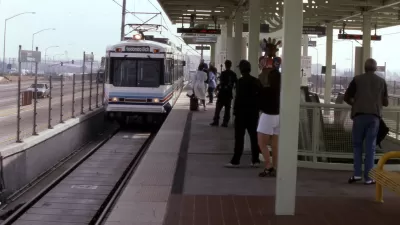What's made the difference in the trajectories of similarly-sized Midwest cities Detroit and Indianapolis? According to David Masciotra, cross-sector partnerships centered around sports entertainment have been the driving force behind Indy's success.
Indianapolis has a lot to boast about these days. With a "thriving culture scene," low unemployment rates, budget surpluses, and a reputation as a "tech hotbed," the city is enjoying a decades-long revival. "The obvious question, then, especially in the face of unmitigated fiscal devastation in Detroit, Cleveland, and many other smaller Midwest cities, is how did they do it?" says Masciotra.
"The Indianapolis plan for resurrection required much more than prayer. Beginning in the 1970s, under a visionary, Republican Mayor – William Hudnut – and Otis Bowen, a cooperative and moderate Republican Governor, Indianapolis sought to become the sports capital of the Midwest, a flytrap for business investment, and a tourist destination," he explains.
"'Top down' economic development schemes have often failed in other cities. Sports stadiums and convention centers rarely deliver on their utopic promises of business stimulation and tourism renewal, but in Indianapolis, the plan was not merely governmental investment. It was cross-sector partnership. The Indianapolis city government and the Indiana state government formed an alliance with Eli Lilly, and other large corporations in the state, to co-fund large scale projects."
"The public-private partnership proved successful not only in sports," he adds, "but also in attracting nightlife activity and encouraging entrepreneurship."
FULL STORY: Sports Teams Really Can Save a City

Alabama: Trump Terminates Settlements for Black Communities Harmed By Raw Sewage
Trump deemed the landmark civil rights agreement “illegal DEI and environmental justice policy.”

Planetizen Federal Action Tracker
A weekly monitor of how Trump’s orders and actions are impacting planners and planning in America.

The 120 Year Old Tiny Home Villages That Sheltered San Francisco’s Earthquake Refugees
More than a century ago, San Francisco mobilized to house thousands of residents displaced by the 1906 earthquake. Could their strategy offer a model for the present?

In Both Crashes and Crime, Public Transportation is Far Safer than Driving
Contrary to popular assumptions, public transportation has far lower crash and crime rates than automobile travel. For safer communities, improve and encourage transit travel.

Report: Zoning Reforms Should Complement Nashville’s Ambitious Transit Plan
Without reform, restrictive zoning codes will limit the impact of the city’s planned transit expansion and could exclude some of the residents who depend on transit the most.

Judge Orders Release of Frozen IRA, IIJA Funding
The decision is a victory for environmental groups who charged that freezing funds for critical infrastructure and disaster response programs caused “real and irreparable harm” to communities.
Urban Design for Planners 1: Software Tools
This six-course series explores essential urban design concepts using open source software and equips planners with the tools they need to participate fully in the urban design process.
Planning for Universal Design
Learn the tools for implementing Universal Design in planning regulations.
Clanton & Associates, Inc.
Jessamine County Fiscal Court
Institute for Housing and Urban Development Studies (IHS)
City of Grandview
Harvard GSD Executive Education
Toledo-Lucas County Plan Commissions
Salt Lake City
NYU Wagner Graduate School of Public Service




























